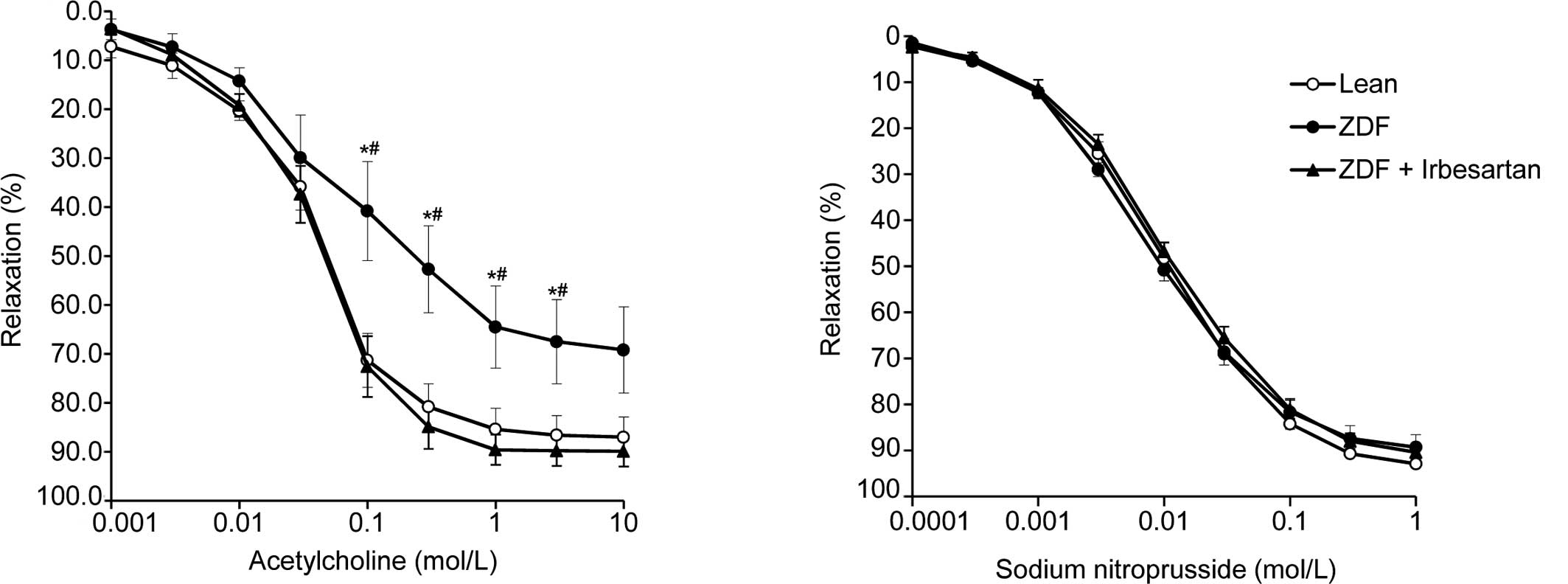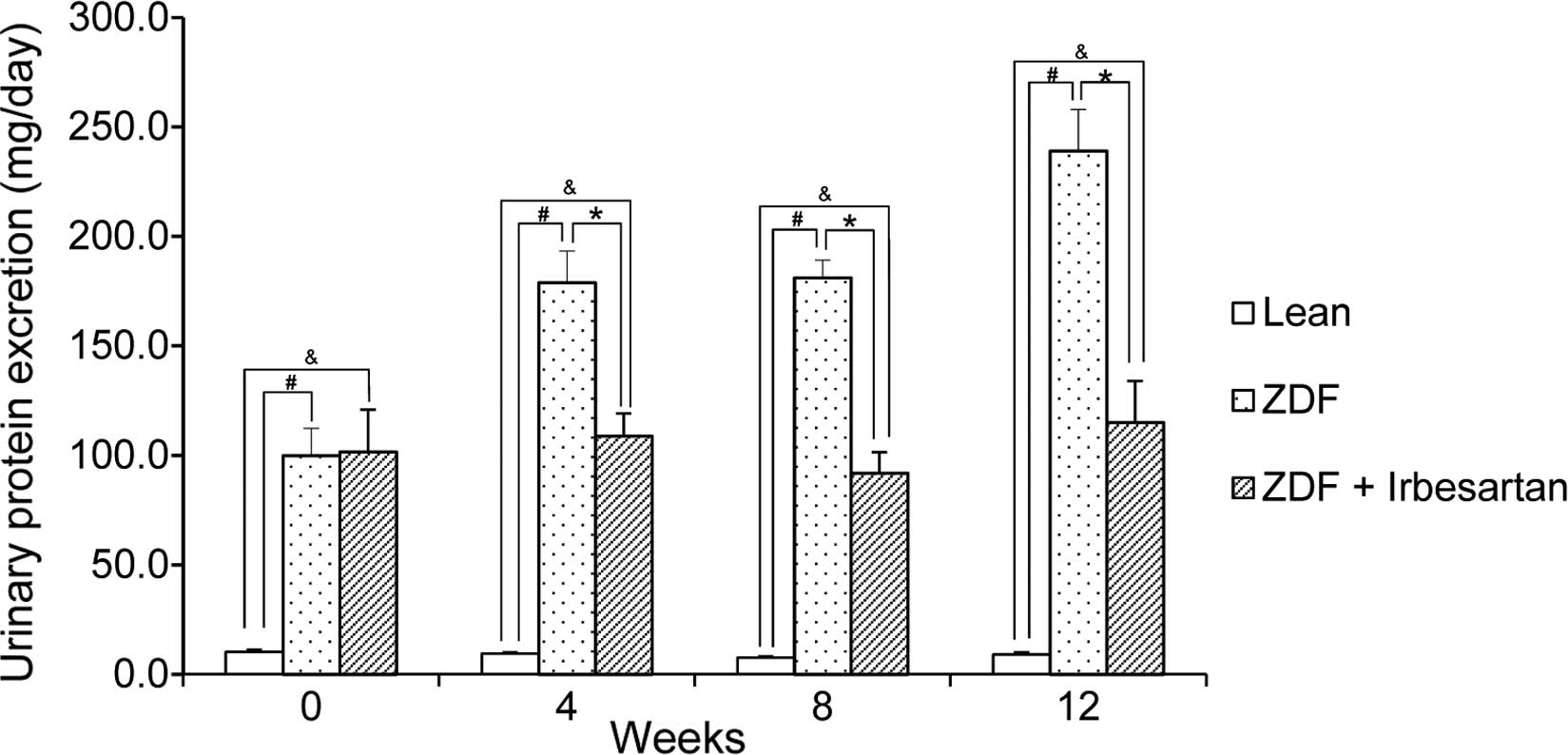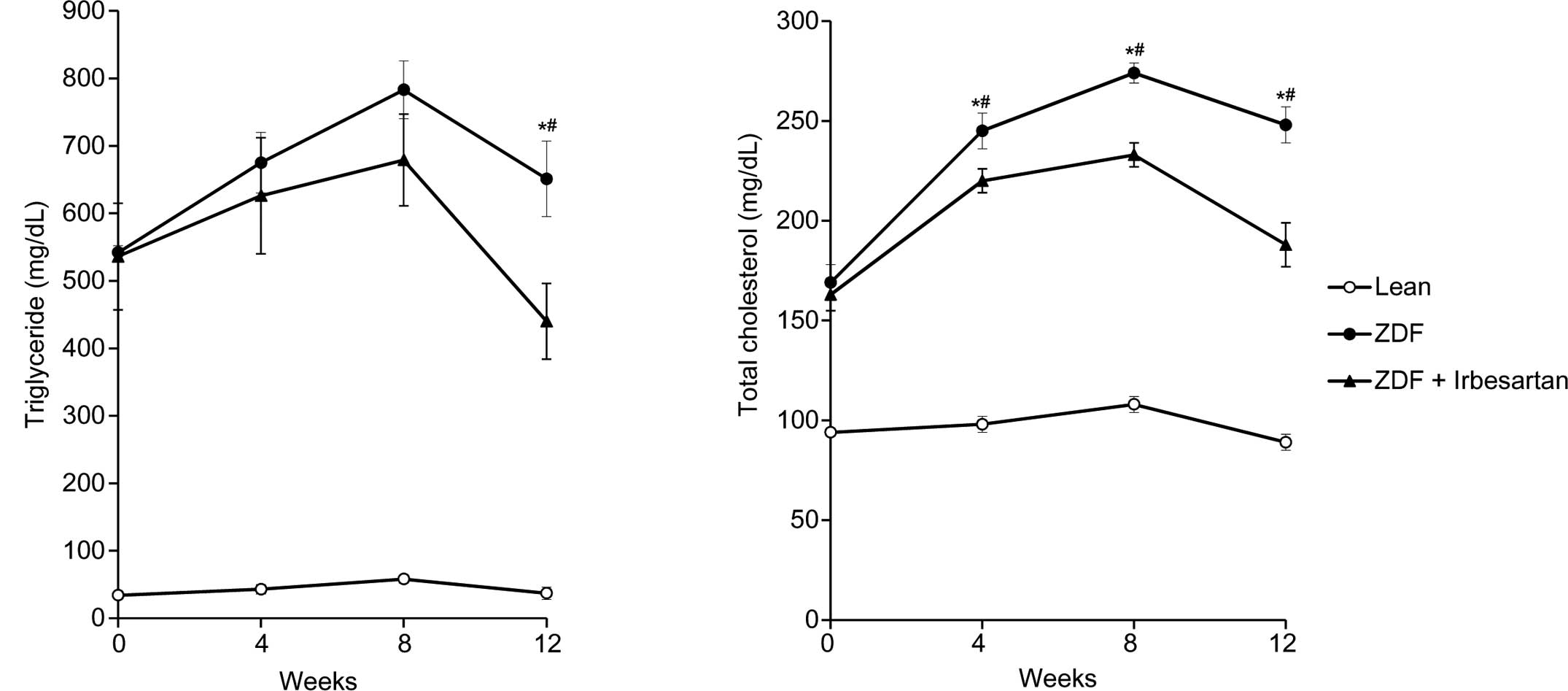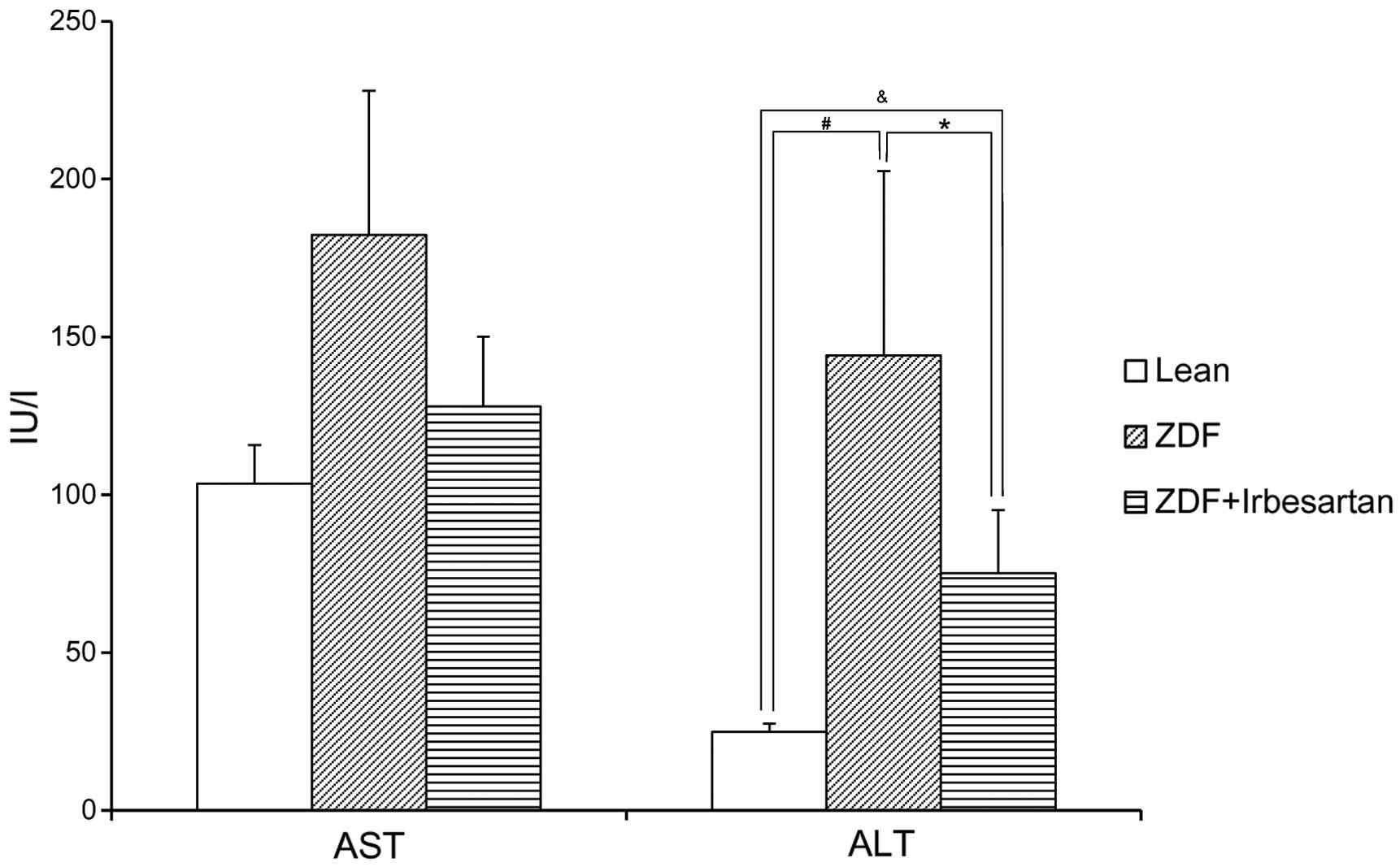Irbesartan improves endothelial dysfunction, abnormal lipid profile, proteinuria and liver dysfunction in Zucker diabetic fatty rats independent of glucose and insulin levels
- Authors:
- Published online on: June 30, 2011 https://doi.org/10.3892/etm.2011.307
- Pages: 957-961
Metrics: Total
Views: 0 (Spandidos Publications: | PMC Statistics: )
Total PDF Downloads: 0 (Spandidos Publications: | PMC Statistics: )
Abstract
Treatment with angiotensin type 1 receptor blockers (ARBs) is known to improve renal dysfunction and glucose metabolism in obese diabetic animal models and humans. This study examined the effects of irbesartan, a unique ARB with PPARγ activation, on endothelial dysfunction, renal dysfunction, abnormal lipid profile, and liver dysfunction in obese fa/fa Zucker diabetic fatty (ZDF) rats. ZDF rats were administered irbesartan (30 mg/kg/day p.o.) for 12 weeks. Blood pressure, glucose metabolism, lipid profile and renal function were measured every 4 weeks. Response of mesenteric artery rings to acetylcholine was also evaluated as an index of endothelial function after 12 weeks of treatment. Although irbesartan did not affect glucose and insulin levels in both glucose and insulin tolerance tests, decreases in systolic blood pressure, dyslipidemia, and urinary protein excretion were noted from 4 weeks after the start of treatment and continued until 12 weeks. Endothelial and liver dysfunctions were also improved after 12 weeks of treatment. Compared to previous reports showing the effects of irbesartan at later time points such as 6 or 12 months, the present study demonstrated that a low-dose of irbesartan had favorable effects from the early period of treatment, independent of glucose metabolism. Our findings suggest that a low-dose of irbesartan improves diabetic complications quickly after starting treatment, and may support the use of irbesartan for preventing progression of diabetic complications.













